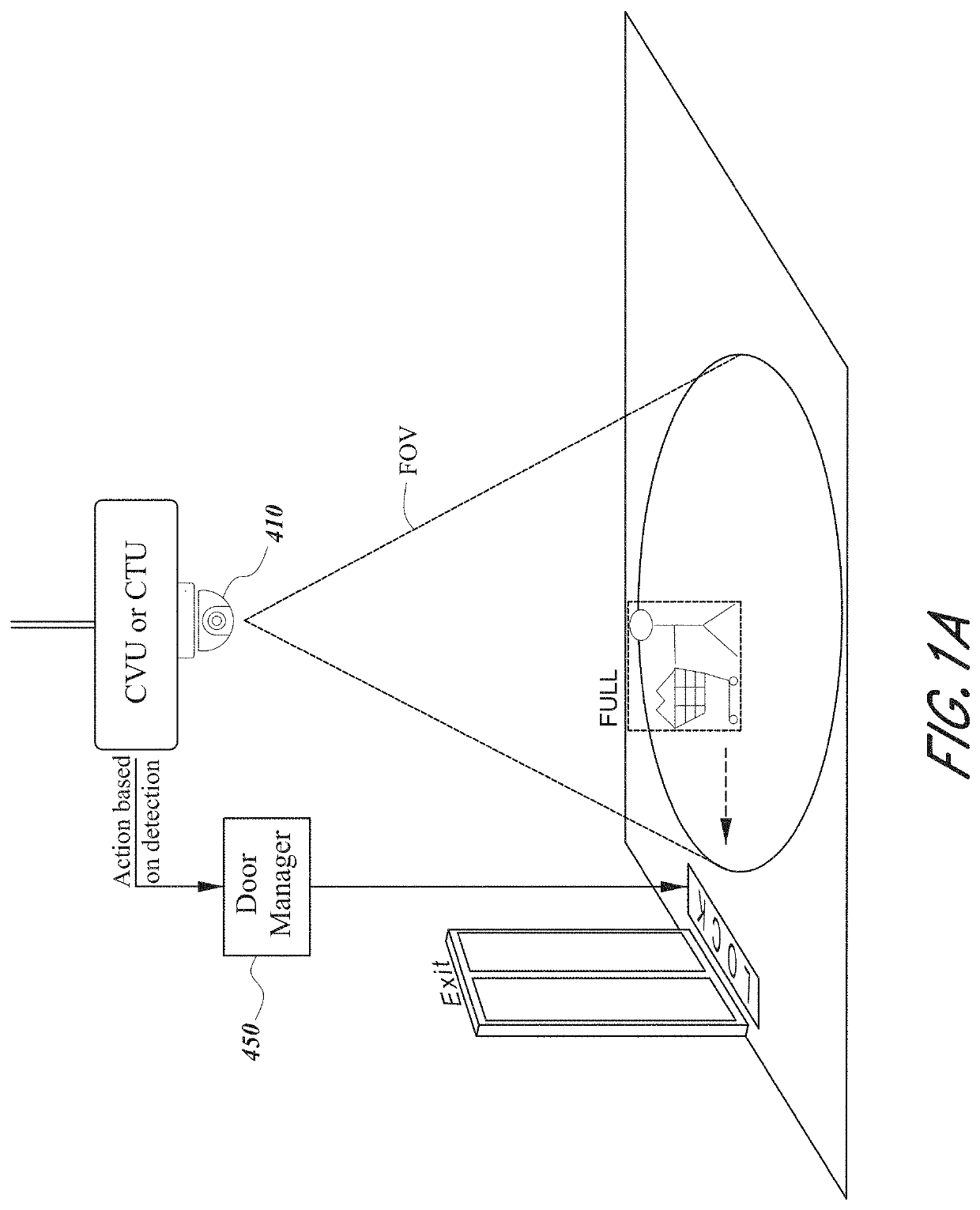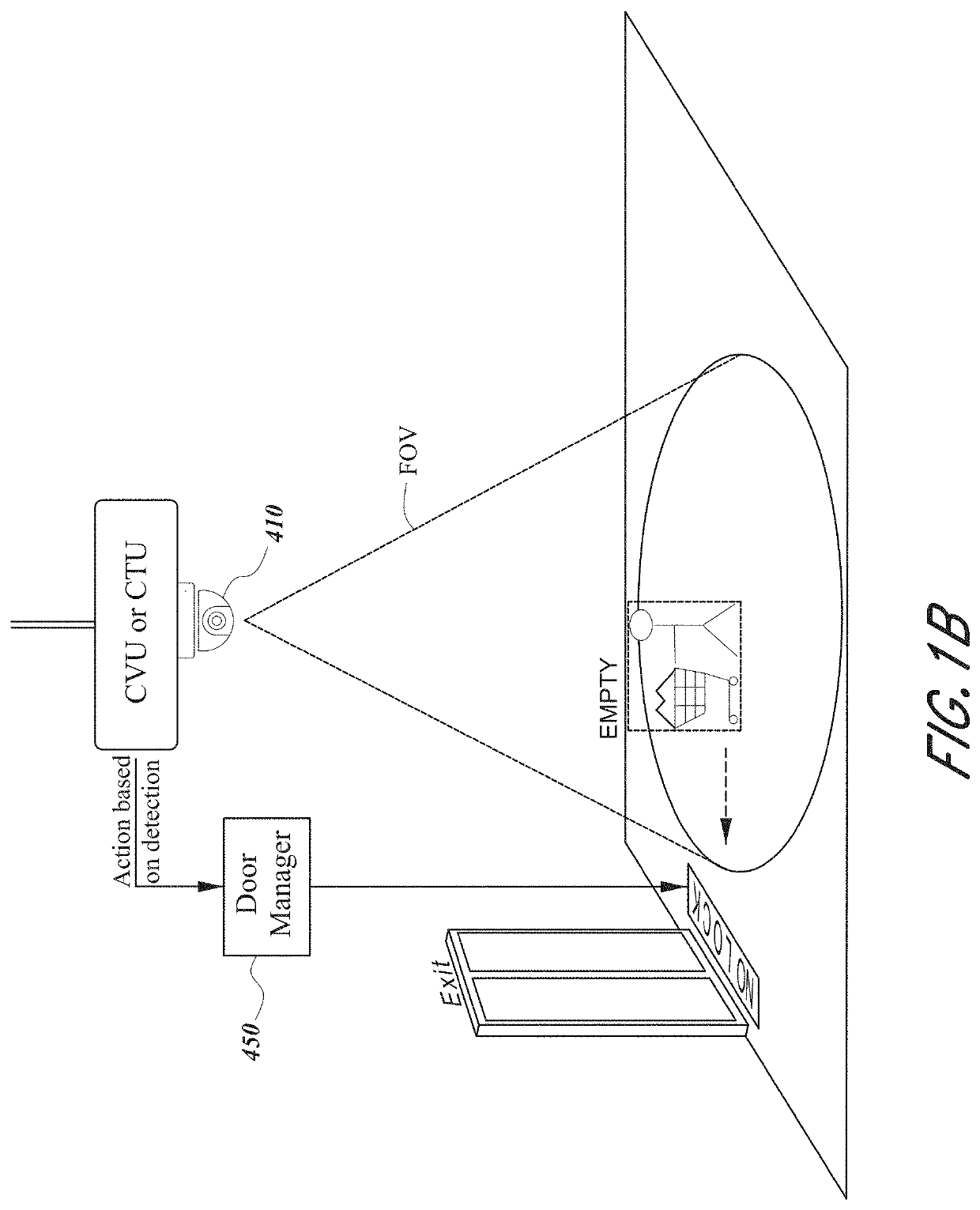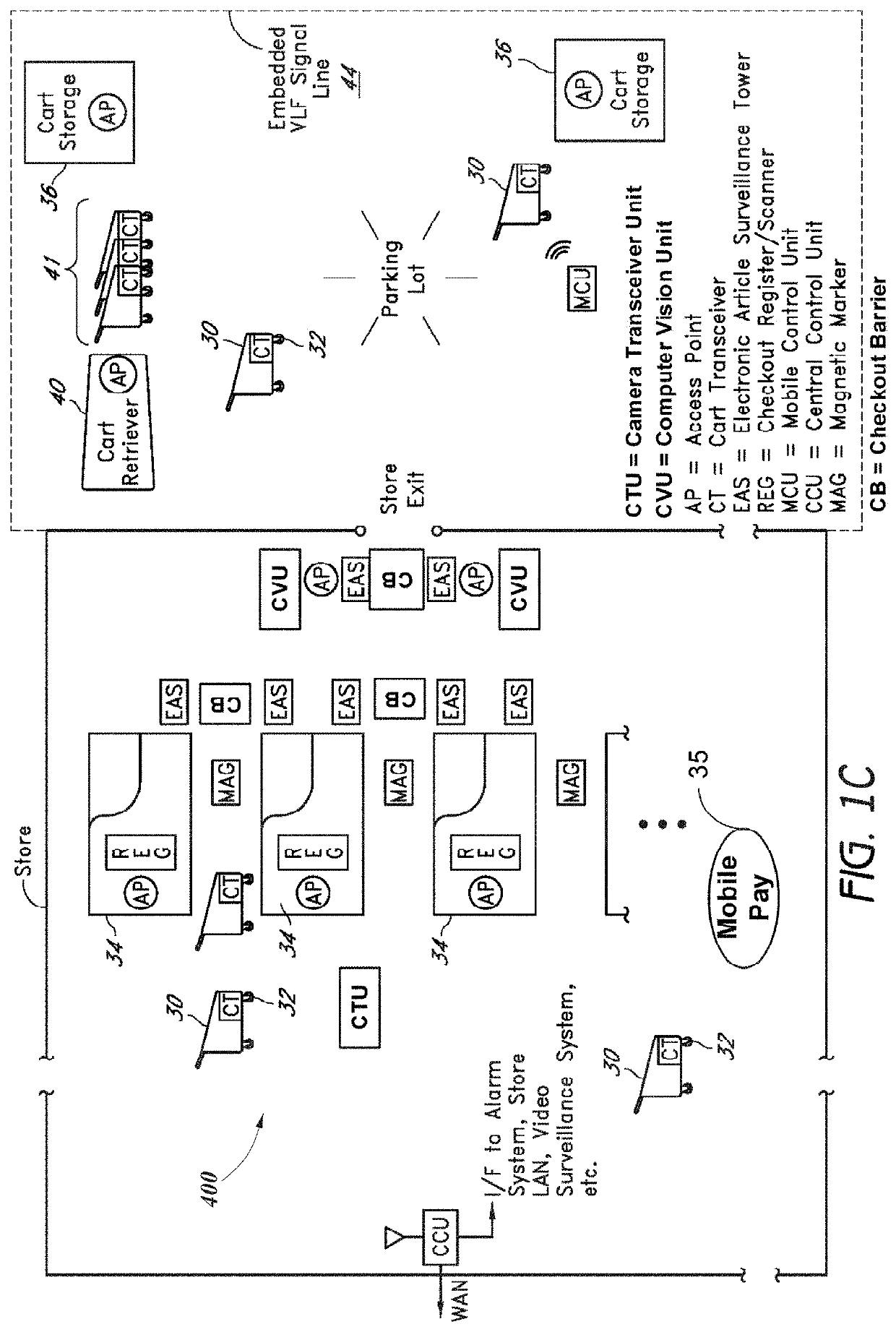Shopping cart monitoring using computer vision
a technology of computer vision and shopping cart, applied in the direction of television system, image enhancement, instruments, etc., can solve problems such as problems associated with some such containment system
- Summary
- Abstract
- Description
- Claims
- Application Information
AI Technical Summary
Benefits of technology
Problems solved by technology
Method used
Image
Examples
example retail
Store Scenario
[0045]FIG. 1C illustrates an example of an anti-theft system 400. The anti-theft system is shown deployed in a store for purposes of tracking or controlling the movement of shopping carts 30 and preventing theft of merchandise in the carts. However, the inventive components and methods of the anti-theft system may be used for other applications, such as tracking luggage carts in an airport or carts in a warehouse.
[0046]The system includes a set of cart transceivers (CTs) that communicate bi-directionally with a set of wireless access points (APs) to create two-way radio frequency (RF) communications links with the shopping carts 30. In one example, each cart transceiver (CT) is fully contained within one of the standard-size (e.g., 5-inch diameter) wheels 32 (typically a front wheel) of a respective shopping cart 30, together with a braking unit that can be actuated by the cart transceiver to lock the wheel. Examples of a braking unit that may be used for this purpose ...
example processing
Pipelines and Workflows for an Anti-Theft System
[0178]FIG. 8 shows an example of a processing pipeline for training a machine learning (ML) model. The pipeline can be performed by the cloud platform 470 of the anti-theft system 400 described, for example, with reference to FIGS. 1, 4A, and 4B. The pipeline receives image data that is collected from multiple CVUs, CTUs, secondary cameras, store surveillance systems, etc. The image data can come from a single retail facility or multiple retail facilities. The pipeline can be accessed or controlled via a ML training application (app) 800, which may be a web-based interface to the cloud platform 470. For example, a system administrator may use the ML training app to start training an ML model, find information about the status of a CVU (e.g., from a database 810 of CVU information), communicate an updated ML model to a particular CVU or CVUs. Because the received image data may be from a particular store (or stores), the trained ML mode...
PUM
 Login to View More
Login to View More Abstract
Description
Claims
Application Information
 Login to View More
Login to View More - R&D
- Intellectual Property
- Life Sciences
- Materials
- Tech Scout
- Unparalleled Data Quality
- Higher Quality Content
- 60% Fewer Hallucinations
Browse by: Latest US Patents, China's latest patents, Technical Efficacy Thesaurus, Application Domain, Technology Topic, Popular Technical Reports.
© 2025 PatSnap. All rights reserved.Legal|Privacy policy|Modern Slavery Act Transparency Statement|Sitemap|About US| Contact US: help@patsnap.com



